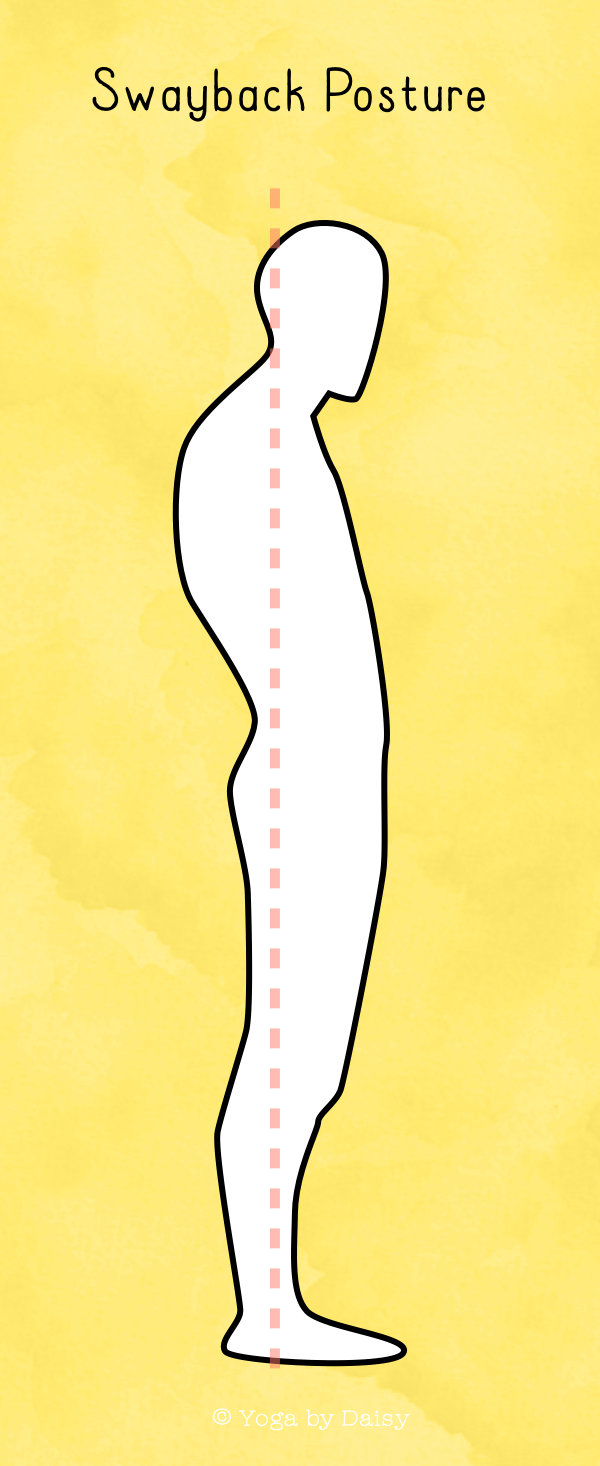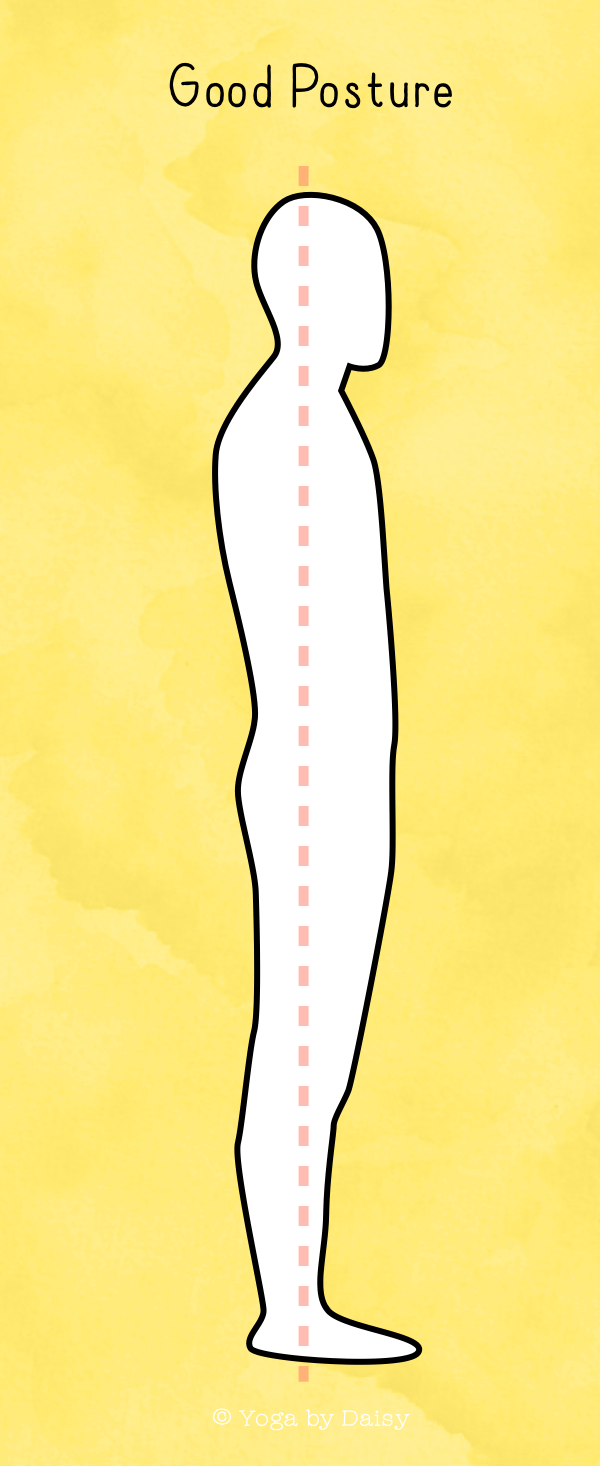Posture and The Way Our Bodies Look
The stress and activities of our industrialized world have not been kind to our bodies. Slouching over the computer all day leads to difficulty straightening up. Lifting, pushing and pulling with poor body mechanics leads to lower back wear and tear. And, as you may have heard, looking down at your phone places 27 to 60 lbs of force on your head and neck.
Mindless movement
Still we trudge onward, faster and faster, trying not to think about it. We need to get things done after all! And later we wonder why we can’t sit up straight and why we are in pain. The way our bodies look—our posture—is a result of the way our bodies have been used. Mindless movement leads to pain and dysfunction. Below is a posture common among Americans. The head is forward, with an increased curve in the thoracic spine. The hips are thrust forward, and the knees are hyperextended.

Imagine the effect of gravity on the body above, its force pressing down through the plumb line. The neck, lower back and knees take on excess force.
Our bodies, like machines, work best when they move a certain way. Each joint has a pivot point and its own network of stability muscles. When we do not use our stability muscles, our movements get sloppy, and the joints slide around too much, causing “wear and tear.” We may look like the image above.
The problem is: correct movement patterns are not intuitive, especially to people in the industrialized world.
Why is this so?
Could it be because, from the very beginning, we are placed in strollers and infant seats that cause the lower back to slouch?
Could it be because we grow up watching our moms and dads stoop and twist over the dishwasher, lug bags, laptops and baby car seats over one shoulder, and lean on counters while waiting in line?
Could it be because, in our teenage years, we learn that slouching is cool, and it is the only way to survive sitting so long in poorly fitting desks?
I don’t know, but it seems that we lack good models for mindful movement in our hurried society.
Mindful movement with daily tasks
Good posture evens out the plumb line. In the image below, gravity presses down more equally through the spine, leaving no vulnerable areas.

In East Africa, a young girl is taught to value posture from a young age. She learns to move with beautiful body mechanics. Check out these photos by Esther Gokhale, a professional posture teacher.
An African laborer’s life might depend on good posture. How long could she carry a vessel of water on her head if she had the typical posture of a young American?
Here in America, our lives don’t directly depend on having good posture. We can get by for quite a while before we have pain. But eventually it will catch up with us.
Yoga can help
Yoga has taught us to be more mindful of our movements, but the trick to keeping ourselves painfree is to maintain these wonderful, mindful movements throughout the day.
For further reading and some beautiful photographs displaying cultural differences in posture, I recommend a book by Esther Gokhale, 8 Steps to a Painfree Back.


Comments